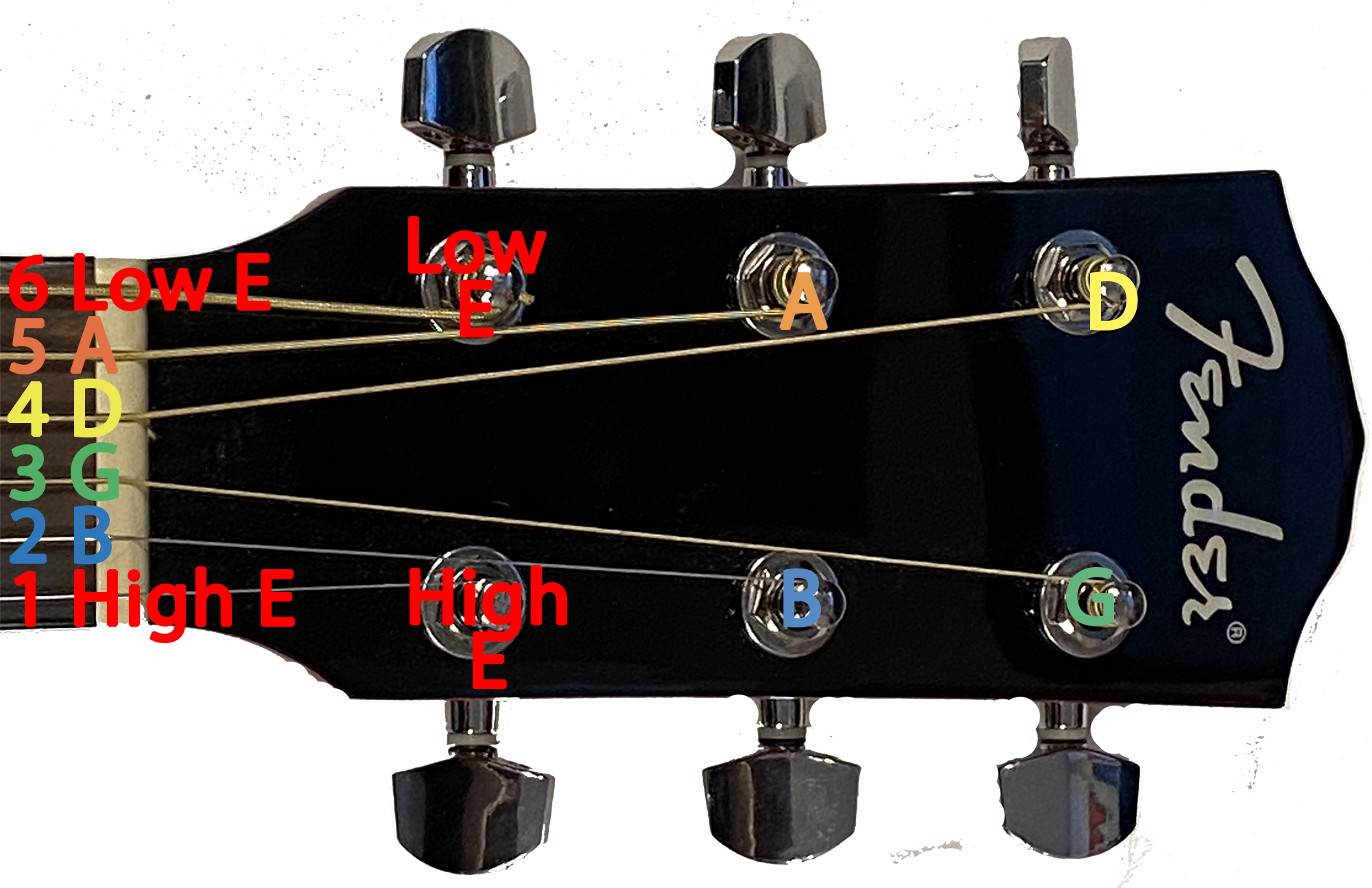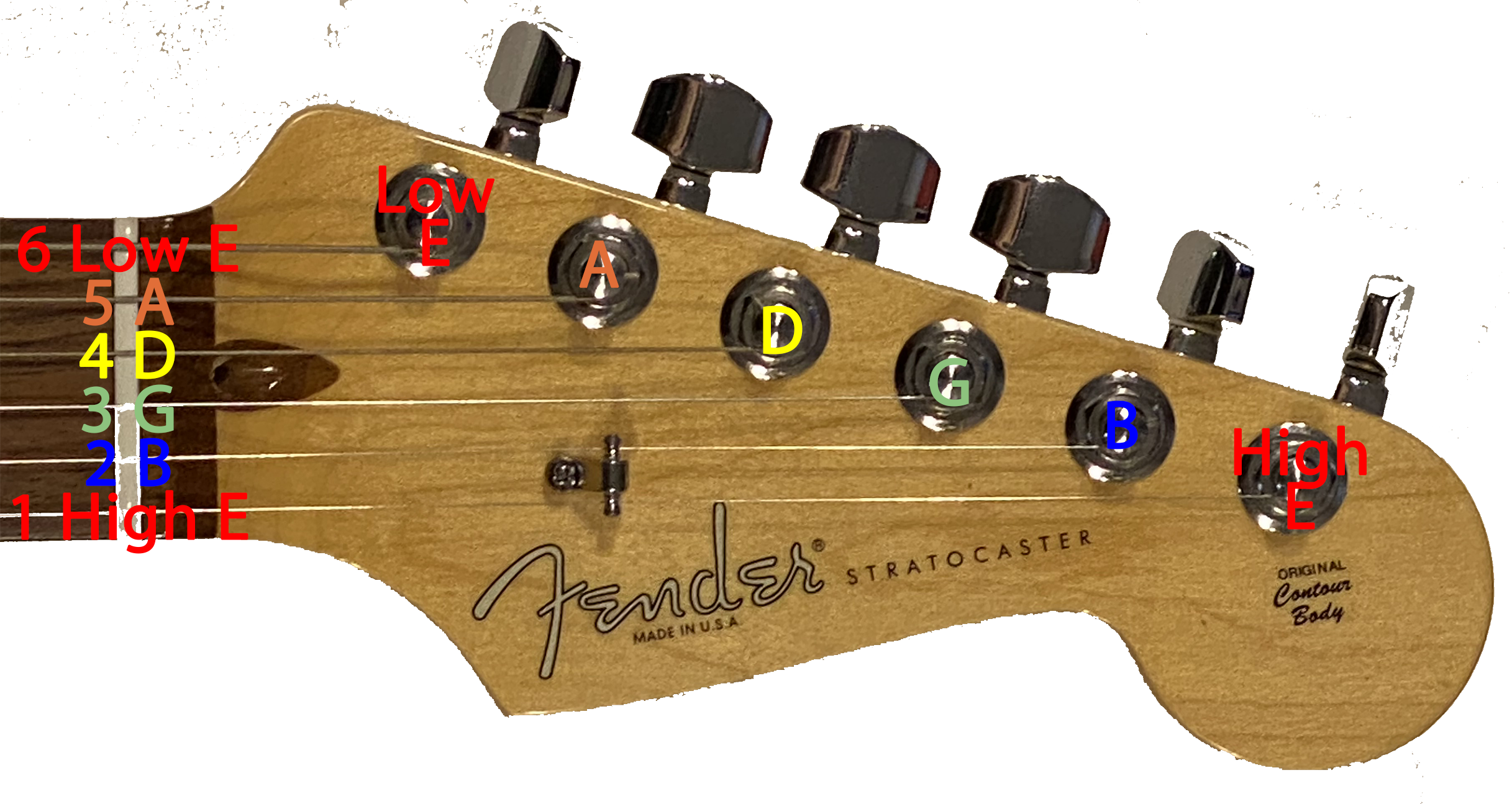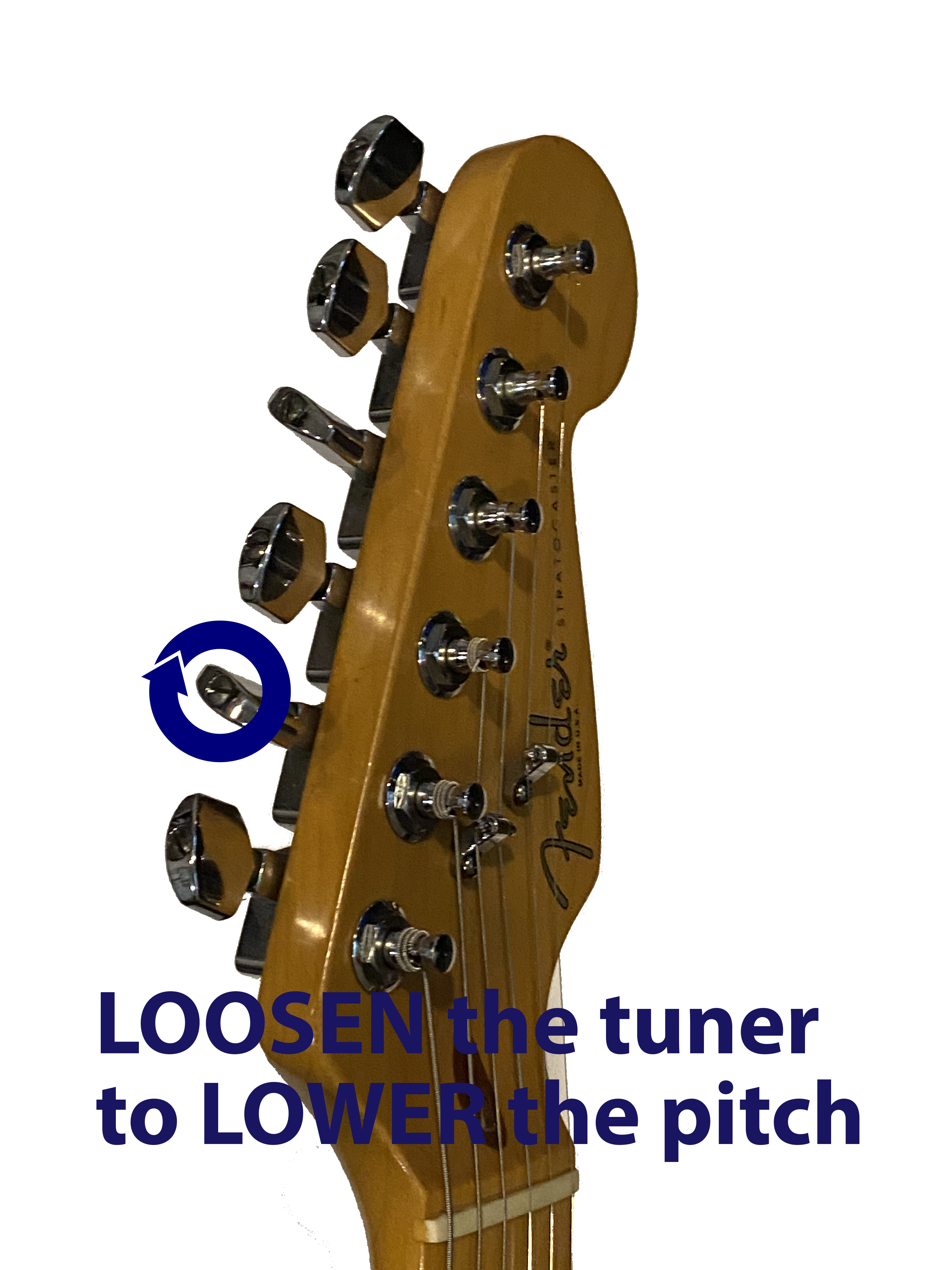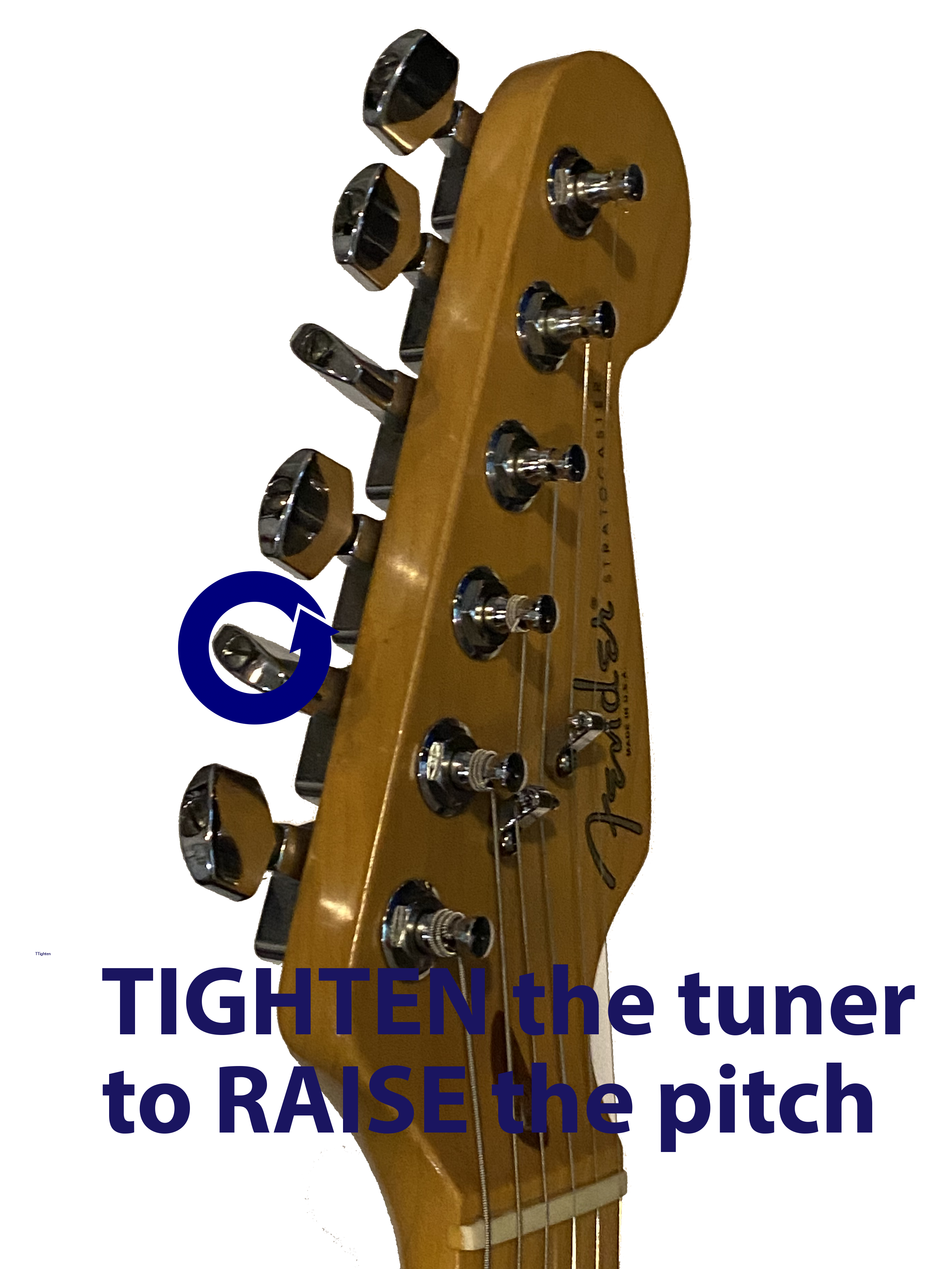Free Online Guitar Lessons
An essential skill in learning the guitar is how to tune your instrument. The strings are under constant tension and will loosen over time. You should get in the habit of checking the tuning every time you pick up a guitar. Remember, if the tuning is off- everything sounds off.
The best solution is to get a tuner. There are several free tuner apps that you can download, or you could always purchase a clip-on or stand-alone tuner. I’d strongly suggest getting both. A tuner will tune your instrument to a standardized pitch (often referred to as Concert Pitch (A=440)). Click here for the Using a Tuner video.
But you will occasionally find yourself without a tuner handy. In this case, you can tune the guitar to itself -tuning each string relative to each other.
To do this, you’ll need to know the names and numbers of the strings:


Put your right-hand index finger on the 5th (A) string and follow it up to its tuner. If your guitar is strung correctly, turning the tuner clockwise should loosen/lower the pitch.

Turning the tuner counter-clockwise will tighten/raise the pitch.

Play your 5th string open and try raising and lowering the pitch by about a quarter turn.
In the following tuning methods, we will listen to two different pitches. Our job is to decide if the second note is higher/lower and adjust that string to match the other’s pitch.
The most common method is called “5th fret tuning”.
Since we don’t have any reference for concert pitch, let’s assume our Low E string is in tune.
*play the 5th fret on the Low E and tune your open A (5th string) to match that pitch. Play the Low E string (6th) and while it is still ringing, play the A (5th) open. The first pitch is our reference tone. Is the second pitch higher or lower? If the second pitch is too low, we need to tighten it to raise the pitch. If the second pitch is too high, we need to lower it.
(Remember to turn the tuning machine for the A string!!! Low E is our reference. It’s much easier to match these two sounds when they ring simultaneously. Some players will play the two notes and reach over with their PICKING hand and turn the tuner. This way, they can hear both notes at the same time and make adjustments to the A if needed).
After you have matched the tones, your LOW E and A (5th) strings are now in tune with each other.
*Now play the A string/5th fret and tune your open D (4th) string to match it.
*Play the D string/5th fret and tune your open G (3rd) string to match it. *IF YOU HAVE A GUITAR WITH 3 to a side TUNERS, THEY ARE NOW OPPOSITE!!!
Play G string/4th fret and tune your open B (2nd) string to match it.
*Play G string/4th fret and tune your open B (2nd) string to match it.
*Finally play B string/5th fret and tune open High E (1st) to match it.
Now strum a chord and hope for the best.

Tuning with harmonics- video and tab *Remember, if your intonation is off, this will affect the tuning.
The second way is to tune with HARMONICS– progressively matching the new strings pitch to the previous.
Many guitarists think that this is easier to hear than the first way, but remember that if a guitar’s intonation is off-the harmonics will be off as well. We’ll use Low E again as our reference pitch.
*play the LOW E string’s 5th fret harmonic and tune your A string’s 7th fret harmonic to it.
*play the A string’s 5th fret harmonic and tune your D string’s 7th fret harmonic to it.
*play the D string’s 5th fret harmonic and tune your G string’s 7th fret harmonic to it.
*play the G string’s 4th fret harmonic and tune your B string’s 5th fret harmonic to it.
*play the B string’s 5th fret harmonic and tune your High E string’s 7th fret harmonic to it.
Tuning to open strings- video and tab

*If it still sounds bad, repeat the steps.
I lied…there are actually 3 ways to tune without a tuner or tuning fork handy. As your ear gets more practice listening to the differences between 2 tones, you’ll find that you start recognizing how different tones harmonize.
Try this simple ear training exercise. MAKE SURE YOUR GUITAR IS PROPERLY TUNED FIRST!
Play your open D and open G strings together. Can you hear how the two tones work well together- even though they are different pitches (remember the frequency/wavelength idea we talked about at the beginning of the article?) These 2 pitches sound nice together because they complement each other. Now try lowering/flattening just your G string about a quarter turn. Our nice harmony just went out the window! The vibrations sound really harsh in comparison. Now play your open D and open G strings together again. While they ring out, try to SLOWLY raise/sharpen the pitch of the G string until it compliments the D. If you tune slowly, you will hear the frequencies start to merge like a picture coming into focus.
Start listening to how different open strings complement one another and eventually you can tune all of your strings without fretting anything!!!
*A note on tuning with distortion:
Only tune with distortion if you are using the last two methods.
Distortion adds sustain to the two notes and clarifies/ accentuates the harmonics we are using to tune.





